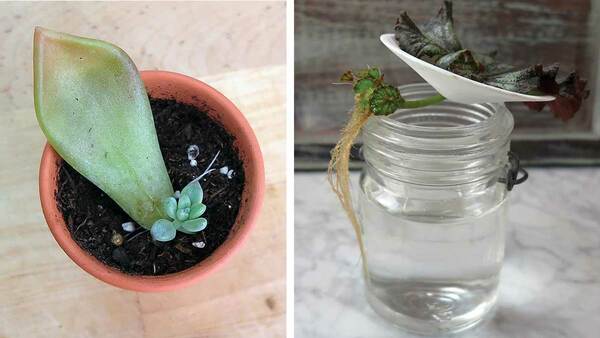
Vegetative propagation, or taking cuttings, is often the best and only viable propagation method that home gardeners can use to make more of their favorite indoor plants. This method is also necessary when you want exact copies of the plant you already have, especially if that plant happens to be a hybrid. Here are five different types of cuttings you can take to propagate houseplants. Each method is suitable for different situations and different plants.
Keep these guidelines in mind before making propagating houseplants
1. Always start with a healthy, pest-free, and disease-free mother plant.
2. Take cuttings in the morning or when plants are fully swollen.
3. Most soft tropical houseplants, especially vining tropicals with aerial roots, are relatively easy to water-root.
4. Certain houseplants, especially those with tougher or succulent stems, may root more successfully in moist, aerated media such as a lightweight indoor potting mix, coir, perlite, floral foam, rockwool, or sphagnum moss.
5. Use a powder rooting hormone on your cuttings to speed up the rooting process. Gel rooting hormones are good for water-rooted cuttings.
6. When water-rooting or rooting succulents, there is no need to cover the cuttings. When rooting cuttings in an inert growing medium (one that contains no additional nutrients), cover your cuttings with a humidity dome or other plastic material.
7. Vegetative cuttings require much less light to root than seedlings, and grow lights are not essential. However, cuttings typically root faster in more-intense light and under grow lights.
8. Do research on the specific species you want to propagate and which tissues can generate both new roots and bud shoots. Otherwise, you could end up with a “blind cutting”—a cutting that grows new roots but never produces a new bud shoot.
9. Keep in mind that it’s illegal to propagate patented plants (plants with a registered trademark name).

















Comments
Log in or create an account to post a comment.
Sign up Log in